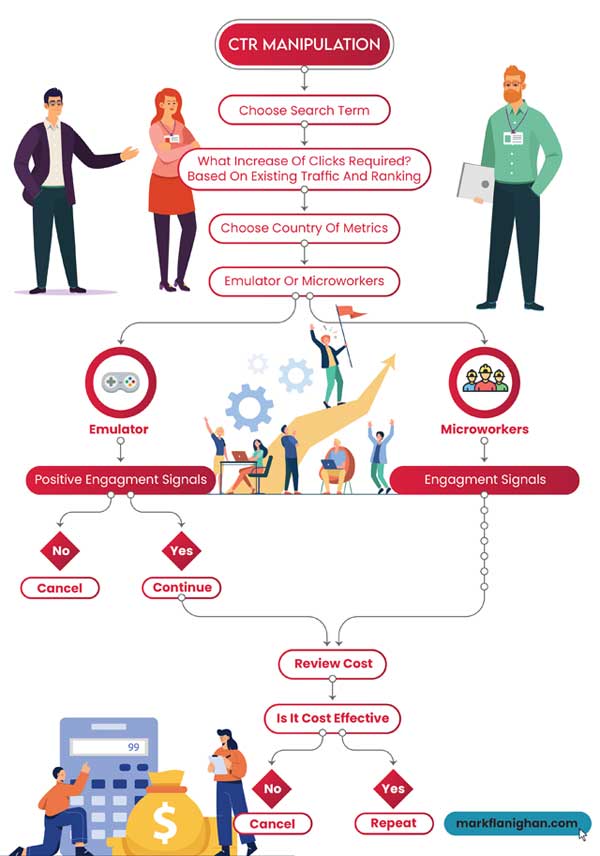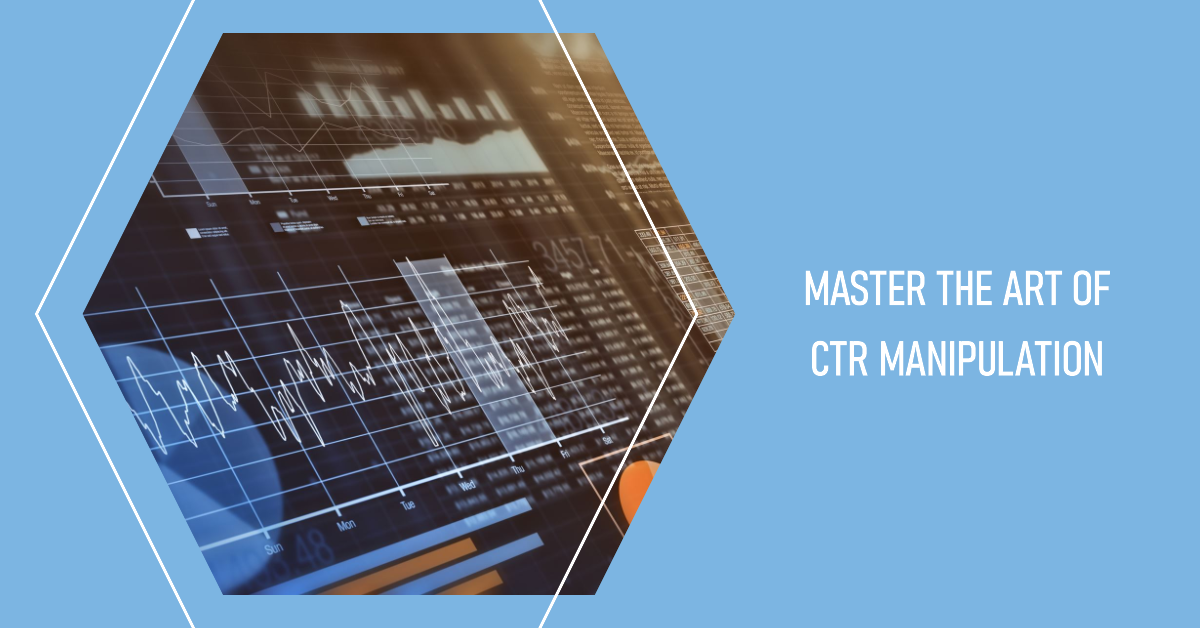Checking Out the Partnership Between CTR Adjustment Solutions and Customer Behavior
In the realm of digital marketing, the influence of click-through rate (CTR) manipulation services on user behavior remains a complex and interesting subject. By exploring the complex relationship between CTR control solutions and user behavior, interesting understandings arise that may improve our understanding of electronic advertising and marketing techniques and their impacts on customers.
Influence of CTR Manipulation on Behavior
Assessing the impact of Click-Through Rate (CTR) manipulation on customer actions exposes essential insights right into the characteristics of online interaction. CTR manipulation entails synthetically pumping up the variety of click a certain web link or ad to deceive users and internet search engine. This practice can lead to an altered understanding of a web page's appeal or importance, inevitably influencing customer actions.

In addition, CTR manipulation can alter the data utilized by formulas to customize customer experiences. This can result in individuals being served material that does not straighten with their preferences or interests, eventually leading to a decrease in user satisfaction and involvement. Recognizing the influence of CTR manipulation on customer habits is vital for maintaining transparency and count on online interactions.
User Engagement With Adjusted CTR
Customer interaction with adjusted CTR data often results in skewed understandings of on-line web content appeal and relevance. When users communicate with material based upon unnaturally inflated Click-Through Rates (CTR), they might think that particular information, products, or services are extra prominent or reliable than they actually are. This can lead to individuals making decisions based on misleading information, bring about potentially undesirable end results.
Engagement metrics like likes, shares, comments, and time spent on a website are usually influenced by CTR manipulation. Customers may be much more likely to engage with web content that shows up to have greater involvement prices, additionally continuing the cycle of skewed understandings. As a result, content makers and marketers may prioritize generating material that produces high CTR rather than concentrating on producing genuinely valuable and pertinent material.

Emotional Impacts of CTR Manipulation

Additionally, the psychological navigate to this website effects of CTR adjustment can likewise manifest in altered decision-making procedures. Individuals may be extra likely to click on content only based on its perceived appeal, instead than its actual worth or significance to their needs. This behavior shift can lead to a shallow involvement with on the internet content, where users might neglect top quality yet much less popular offerings in support of those with synthetically enhanced CTRs.
In significance, the psychological implications of CTR control highlight the importance of keeping transparency and credibility in online interactions to cultivate authentic user involvement and depend on.
Ethical Considerations in CTR Adjustment
CTR adjustment elevates problems concerning tricking individuals, misshaping data analytics, and jeopardizing the credibility of online web content. By artificially blowing up CTR, customers might be misinformed right into clicking on web links or ads they would not have selected otherwise, leading to a disingenuous online experience.
Another moral facet to ponder is the justness of controling CTR Clicking Here to acquire an unjust advantage over competitors. Taking part in such methods not just breaches concepts of justice yet additionally undermines the trust fund that users place in on the internet systems. It is vital for organizations and electronic marketing experts to maintain honest requirements in their techniques to ensure openness, trustworthiness, and lasting sustainability in the online setting.
Ramifications for Digital Marketing
With the increasing dependence on electronic platforms for marketing purposes, the technique of manipulating click-through prices (CTR) positions substantial ramifications for the efficiency and stability of electronic advertising and marketing strategies. CTR adjustment can bring about skewed information analytics, misleading marketing professionals into thinking that their campaigns are executing much better than they in fact are. This can result in misallocation of sources, with business buying underperforming techniques based on falsified CTRs. When customers realize that CTRs have actually been manipulated, it can wear down trust in the brand, leading to long-lasting adverse effects for customer loyalty and brand name credibility.
Furthermore, using CTR control services can create an unfair competitive landscape, where firms that involve in such techniques get a fabricated benefit over those that adhere to honest marketing standards. This can suppress technology and creative thinking in electronic advertising, as success ends up being more about manipulation methods than supplying genuine value to customers. Ultimately, the effects of CTR adjustment for electronic advertising and marketing extend past temporary gains, affecting the overall sustainability and trustworthiness of marketing initiatives in the electronic realm.
Verdict
Finally, the relationship in between CTR control services and customer behavior is intricate and diverse. The impact of CTR control on behavior, customer interaction with manipulated CTR, emotional effects, moral considerations, and implications for electronic advertising all play a duty fit this relationship. Recognizing these dynamics is crucial for marketers and scientists alike in order to browse the honest effects and maximize the performance of their digital advertising strategies.